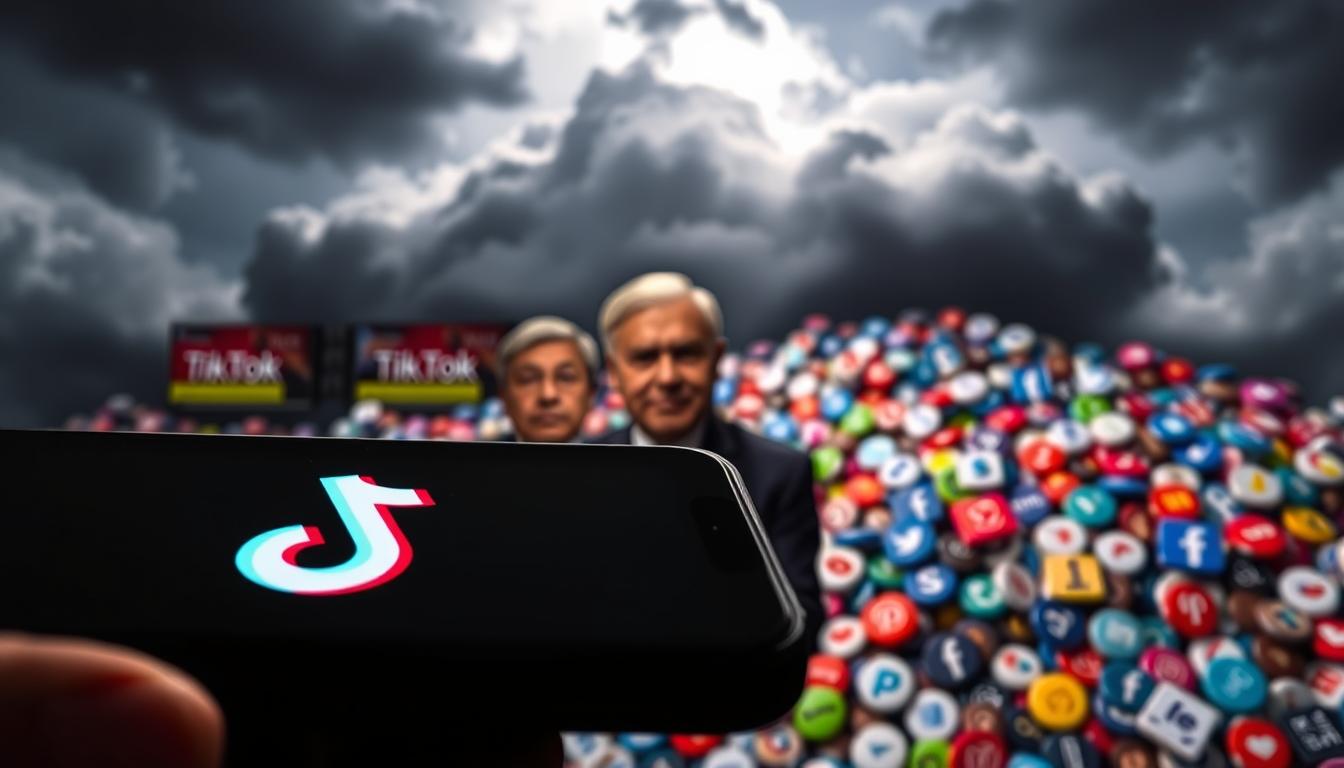Confusion swirls around the future of this popular app in the U.S. With over 170 million active users nationwide, many wonder what comes next. The platform faced a brief shutdown in January 2025 before returning, leaving people questioning its stability.
Recent bipartisan legislation demands that ByteDance, the parent company, sell its stake. The Supreme Court upheld this law, adding legal weight to the situation. Deadlines loom, but uncertainties remain about potential buyers and how this affects everyday users.
This article breaks down the latest updates, legal battles, and possible outcomes. Stay informed about what’s happening behind the scenes and what it means for you.
Key Takeaways
- Over 170 million U.S. users rely on the app daily
- January 2025 saw a temporary shutdown before service resumed
- New laws require ByteDance to divest ownership
- The Supreme Court supports the ban legislation
- Unanswered questions remain about timelines and buyer interest
Is TikTok Actually Getting Banned? The Latest Updates
Recent policy shifts have reshaped the app’s availability in the U.S. Legal battles and executive interventions create a patchwork of access rules. Users and creators navigate these changes daily.
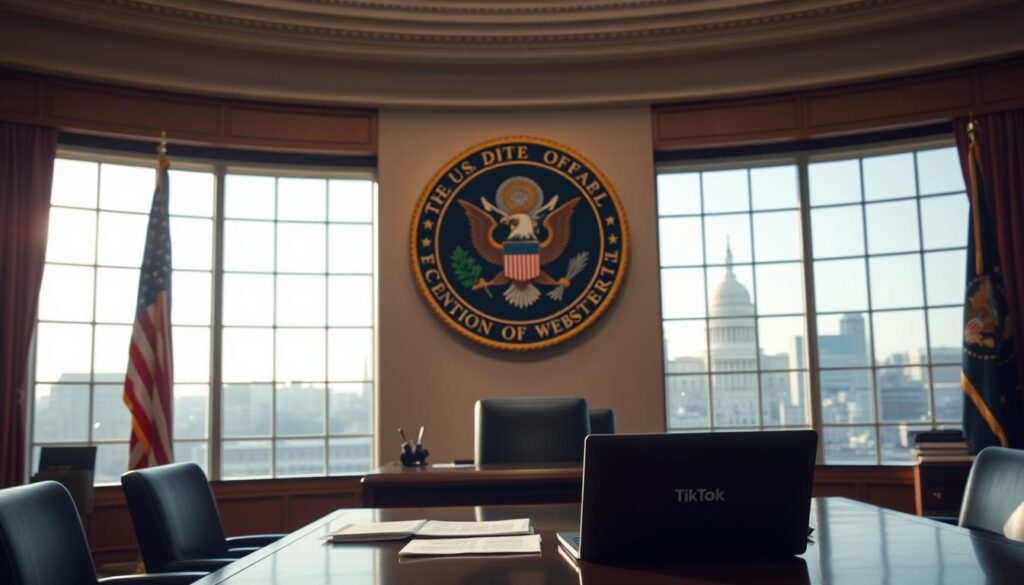
Trump’s Executive Order Delays Enforcement
President Donald Trump signed an executive order on January 20, 2025. This paused enforcement for 75 days, buying time for negotiations. A second order extended the deadline to June, easing immediate pressure.
Apple and Google reinstated the app on February 13. This followed assurance letters from the Attorney General. However, smart TV platforms like LG and Vizio still block downloads.
Current Status: App Restored but Ban Law Remains
The platform operates today, but challenges persist. Service providers like Akamai face risks if the ban resumes. Traffic dipped 10% despite restoration, signaling user caution.
Even Marvel Snap, a unrelated game, faced temporary removal. It returned quickly, but the incident highlights broader uncertainties.
| Platform | Status | Notes |
|---|---|---|
| iOS/Android | Available | Restored Feb 13 |
| Smart TVs (LG/Vizio) | Blocked | No download option |
| Web | Operational | 10% traffic decline |
While the app remains functional, its future hinges on ongoing legal and political decisions. Users should stay informed as deadlines approach.
Why the US Government Wants to Ban TikTok
U.S. officials cite serious risks tied to foreign-owned apps. Concerns center on how user data could be accessed or misused. These fears sparked bipartisan support for stricter regulations.

National Security Concerns and Data Privacy
The FBI warns that the app’s algorithm might share U.S. user behavior with foreign entities. A 2022 Forbes report alleged journalist surveillance via the platform. During a January outage, Cloudflare noted an 85% traffic drop—hinting at reliance on centralized servers abroad.
Oracle proposed auditing data flows, but debates continue. Some lawmakers argue even encrypted traffic could expose patterns. For brands leveraging digital marketing trends, these uncertainties create challenges.
ByteDance’s Ties to the Chinese Government
The parent company faces scrutiny over its Beijing-based operations. Critics claim China’s laws could compel ByteDance to hand over data. Nuverse, its gaming arm, faced brief removals—showing how interconnected subsidiaries are.
“Split ownership” proposals aim to separate U.S. operations but keep algorithms in China. This hybrid model worries security experts. As tensions rise, the Chinese government denies any data-sharing demands.
The Legal Battle: From Executive Orders to Court Rulings
Presidential actions and court rulings shape the platform’s fate. Over a four-year span, strategies shifted dramatically. What began as a 2020 executive order evolved into sweeping 2024 legislation.
Timeline of Trump’s Interventions
Trump’s administration pushed for a ban via signed executive orders in 2020. Courts blocked these efforts, citing free speech concerns. By 2024, Biden’s Protecting Americans Act introduced stricter measures.
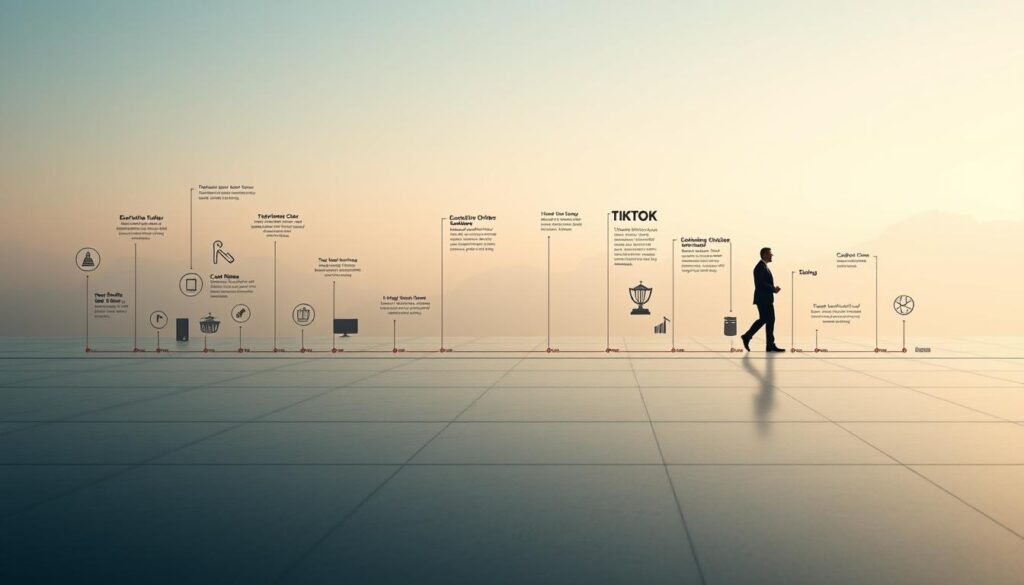
Senators Markey, Van Hollen, and Booker opposed the bill. They argued it set a dangerous precedent for digital rights.
“This overreach ignores due process,”
Senator Booker stated during debates.
Supreme Court’s Stance on the Ban
SCOTUS upheld the 2024 law, rejecting First Amendment challenges. The ruling emphasized national security over corporate interests. Service providers now face $500B liability risks if enforcement resumes.
| Action | Year | Outcome |
|---|---|---|
| Trump’s Executive Order | 2020 | Blocked by courts |
| Biden’s Protecting Americans Act | 2024 | Upheld by SCOTUS |
| AG Bondi’s Enforcement Delay | 2025 | 75-day pause |
Tariff negotiations emerged as a bargaining chip. Meanwhile, the White House and Congress clash over enforcement timelines. Legal experts warn of prolonged uncertainty for users and businesses alike.
Who Wants to Buy TikTok? Potential Buyers in the Mix
Several high-profile investors are stepping forward to acquire the platform. Bids range from blockchain-driven proposals to surprise offers by internet celebrities. With a $35–50B valuation, the stakes are sky-high.
Frank McCourt’s “People’s Bid” and Alexis Ohanian
Former LA Dodgers owner Frank McCourt leads a consortium aiming to decentralize the app. His “Freedom Edition” plan uses blockchain to give users control over data. Reddit co-founder Alexis Ohanian backs the bid, calling it a “new model for the internet.”

Elon Musk, Oracle, and Other Rumored Investors
Despite Trump’s endorsement, Elon Musk denied interest last week. Oracle and Microsoft explored a joint bid, leveraging cloud infrastructure. Amazon’s CBS-confirmed offer emerged quietly, focusing on ad-tech integration.
MrBeast’s Unexpected Offer
YouTube star MrBeast tweeted a verified offer to buy tiktok, joking he’d “fix the algorithm.” Legal experts confirmed his team’s serious inquiry, though funding remains unclear. Meanwhile, Perplexity AI pitched rebuilding the algorithm from scratch.
| Buyer | Offer Highlights | Status |
|---|---|---|
| McCourt Consortium | Blockchain decentralization | Active |
| Oracle-Microsoft | Data security focus | Exploratory |
| MrBeast | Creator-led revamp | Unofficial |
Chinese approval remains a hurdle—any deal must preserve algorithm access. As deadlines near, the ceo scramble intensifies.
What Happens if TikTok Isn’t Sold by the Deadline?
The countdown begins as the deadline for TikTok’s sale approaches. Without a deal, three paths emerge: another extension, forced divestment, or a full ban. Each scenario carries ripple effects for creators and businesses.
Possible Scenarios: Extension vs. Enforcement
Trump’s team reportedly explored a sovereign wealth fund purchase to delay action. Meanwhile, China’s 34% tariff threat could push negotiations. If no buyer steps up, Apple and Google must remove the app from their stores.
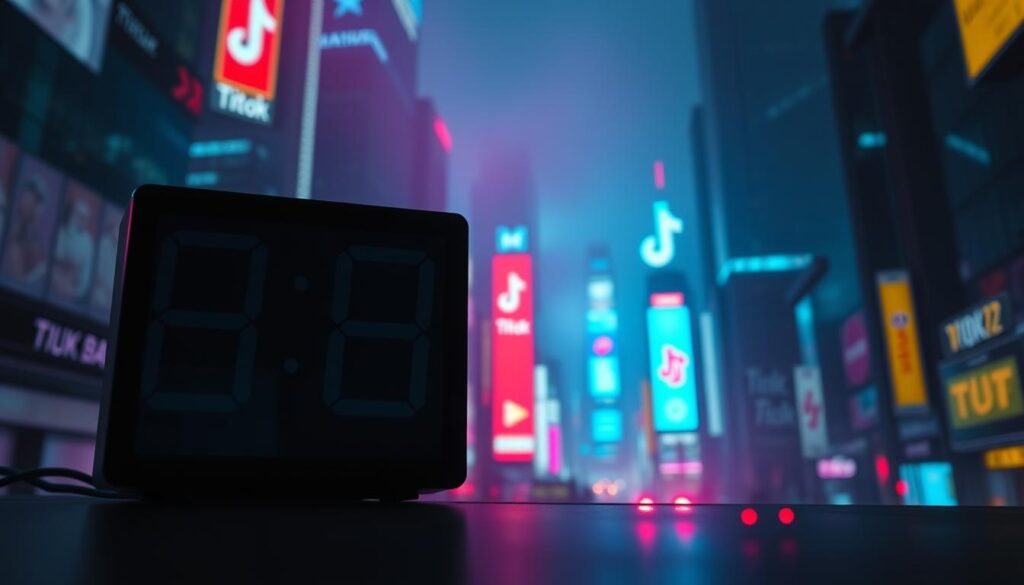
Enforcement isn’t instant. The 2025 AG letters gave platforms 30 days to comply. Some predict a grace period for users to transition. Others warn of immediate blackouts.
Role of Apple and Google in App Removal
Android users might sideload via APK files, though security risks rise. iOS lacks this option, sparking $3K listings for “jailbroken” iPhones. Progressive web apps could offer a temporary fix.
Twitch and YouTube Shorts already host migrating creators. A ban might accelerate this shift, reshaping digital content landscapes overnight.
| Scenario | Likelihood | Effect |
|---|---|---|
| Extension | High | Delays disruption |
| Forced Sale | Medium | New ownership terms |
| Full Ban | Low | Immediate removal |
Legal battles could stretch timelines further. Yet with the Supreme Court’s stance, preparation is key for all parties.
How the TikTok Ban Affects Users and Creators
Millions of creators and businesses face uncertainty as the platform’s future hangs in the balance. A 10% traffic drop since its January restoration shows user caution. For many, the app isn’t just entertainment—it’s a livelihood.

App Availability and Sideloading Workarounds
If removed from stores, Android users can sideload the APK file. This risks malware exposure. iOS lacks this option, pushing some toward jailbroken devices priced at $3K.
Smart TVs still block downloads, hurting creators who rely on larger screens. Progressive web apps may offer a temporary fix but lack full functionality.
| Platform | Workaround | Risk |
|---|---|---|
| Android | APK sideloading | Malware |
| iOS | Jailbreaking | Voided warranty |
| Web | PWA | Limited features |
Impact on Content Creators and Businesses
The $500M creator economy could collapse overnight. Brand deals often include clauses allowing termination if the app shuts down. Small businesses using TikTok Shop face revenue losses.
Gaming content creators report a 30% dip in sponsorships. Alternatives like RedNote and Xiaohongshu gained 15% more U.S. users this month. Still, migrating audiences isn’t instant.
“My entire income vanished when my videos got demonetized overnight.”
For now, the platform remains operational today. But creators should diversify their platforms to mitigate risks. The parent company hasn’t clarified compensation plans for affected users.
TikTok Alternatives: Where Users Might Go Next
Digital landscapes shift as alternative apps gain traction. With uncertainty looming, creators and users explore platforms offering similar features. Meta and YouTube lead the charge, while niche apps carve dedicated audiences.
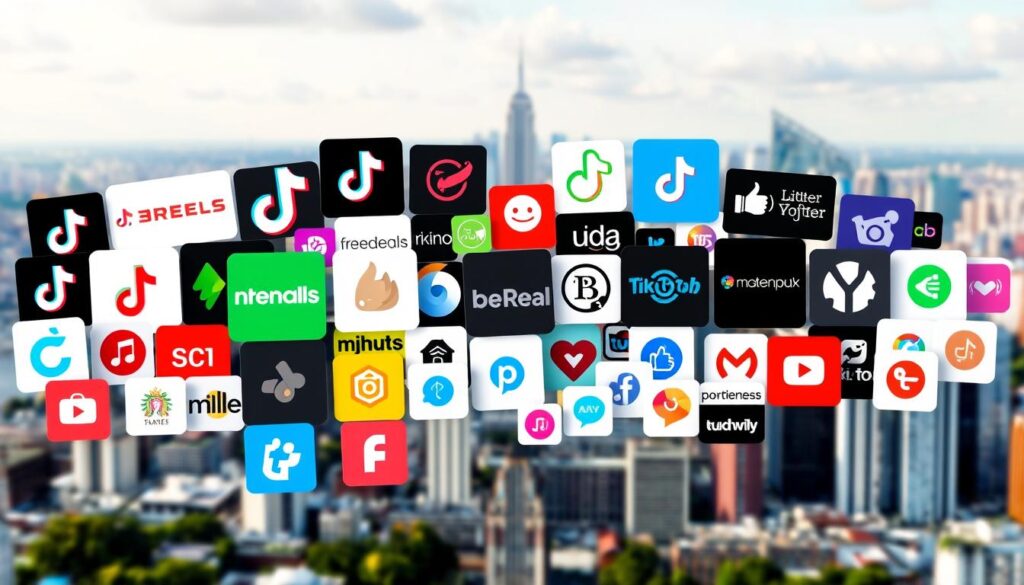
Instagram Reels vs. YouTube Shorts
Meta’s $10B investment in Reels prioritizes creator payouts. Its algorithm favors longer watch times, unlike TikTok’s rapid-fire clips. Meanwhile, YouTube Shorts boasts 2B+ logged-in users monthly. Monetization policies differ sharply:
- Reels: Bonuses for top performers (up to $10K/month).
- Shorts: Ad revenue sharing (45% creator cut).
Twitch expanded live-streaming tools, luring gamers. “Short-form video is just the beginning,” notes a Twitch exec.
The Rise of Niche Platforms
Xiaohongshu, China’s “Little Red Book,” saw 300% U.S. growth this month. Its hybrid social-commerce model appeals to influencers. Lemon8 mimics Pinterest’s aesthetic, while Clapper brands itself as the “anti-TikTok.”
“Zigazoo’s kid-safe environment is a game-changer for parents.”
| Platform | Unique Edge |
|---|---|
| RedNote | Decentralized content ownership |
| Lemon8 | Pinterest-like discovery |
| Zigazoo | COPPA-compliant for kids |
Vertical video dominates the internet, ensuring these alternatives stay relevant. Whether through investors or innovation, the race to replace TikTok heats up each week.
Conclusion: What’s Next for TikTok in the US?
The June deadline looms as a pivotal moment for digital sovereignty debates. President Donald’s delayed order bought time, but the government now faces a hard choice—force a sale or enforce removal.
Control over algorithms sparks geopolitical tensions. Even if resolved, legal battles may persist. Other Chinese apps could face similar scrutiny, setting a global precedent.
Creators already adapt, migrating to alternatives like Reels or Shorts. Yet questions linger: Who governs digital borders? Can users truly own their data?
For now, all eyes remain on Washington—and the clock.

